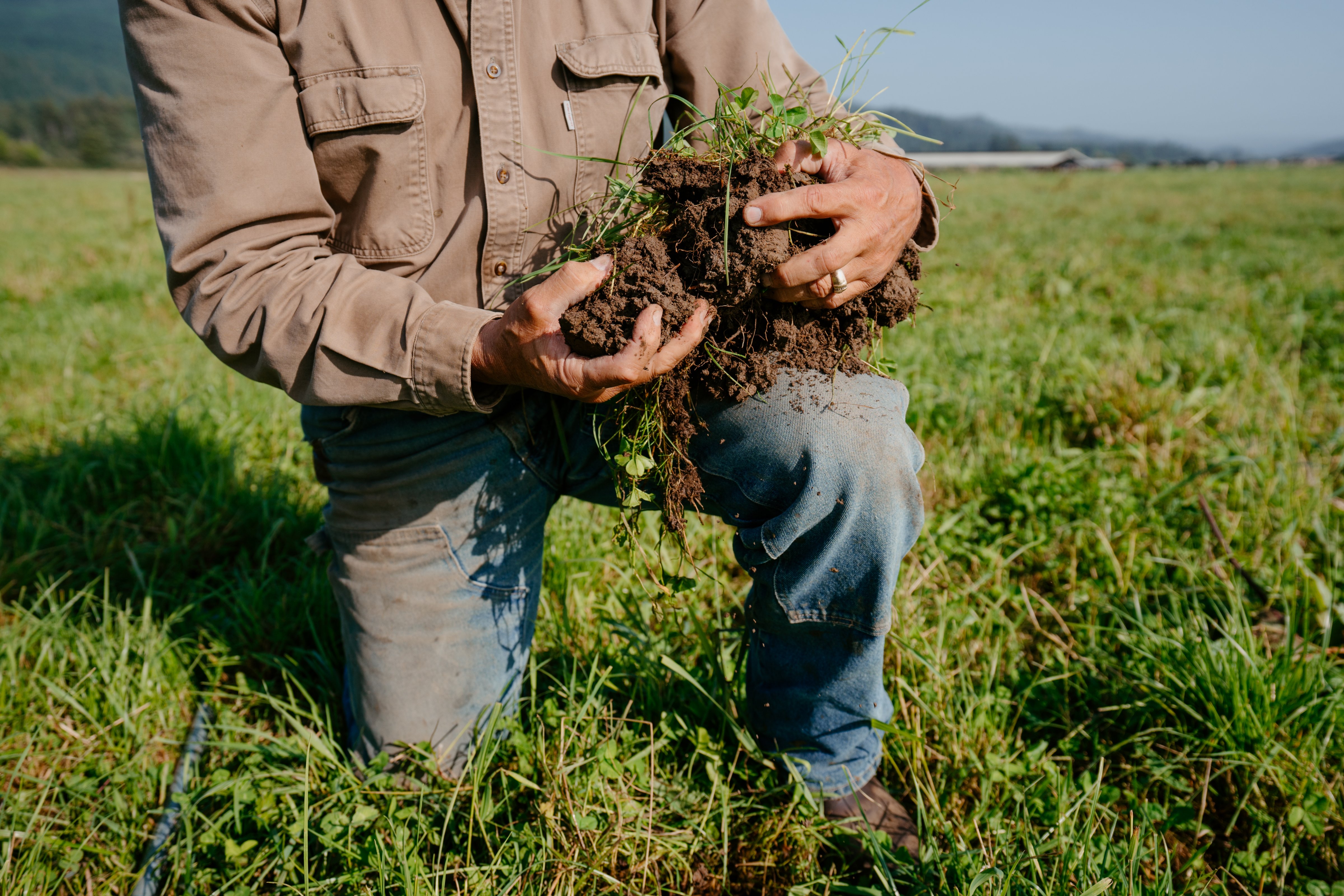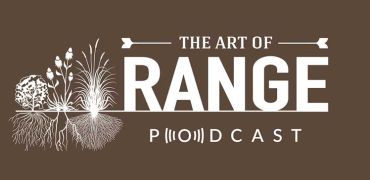These Cattle Farmers Are Cutting Emissions and Boosting Nature
PUBLISHED 11 March 2024
Source: ESHA CHHABRA | Time Magazine
Cows are not the problem. It’s the way they’re managed and farmed that is creating a climate problem, says Peter Byck, a professor of practice at Arizona State University’s sustainability school and producer of the 2020 short film series Carbon Cowboys and most recently, Roots So Deep. “I’ve found examples of ranches in the U.S. that are adding to their herd, and yet, reducing their carbon footprint through regenerative practices. So, cows can actually be part of the solution to climate change, when regeneratively grazed.”
While estimates vary for livestock’s climate impact—ranging anywhere from 11.1% to nearly 20% of global greenhouse gas emissions—cows, in particular, have been vilified as the problem because of their methane-laden burps and farts.
“Yes, absolutely, cows emit methane. But that’s not the full story,” says Byck. “It’s the large-scale industrial production of livestock that has put a strain on the environment.”
The solution, says Byck, is adaptive multi-paddock grazing, commonly referred to as AMP grazing. This practice, which involves ranchers periodically shifting their cattle between different plots of land, helps farmers create carbon sinks with their herds, he explains. It’s akin to how bison roamed the open plains of the U.S., with long rest periods between each grazing that gives grasses time to grow, thereby enriching the soil. “Overgrazed pastures, instead, look like a golf course,” says Byck.
Watch the Video
More growing time also supports a greater diversity of plants, and with that more birds and insects, all of which help fight off pests in a natural approach, he explains. Meanwhile, the vegetation covers the soil, keeping the ground cool and allowing microbes to thrive, which play a key role in storing carbon in the soil.
Through Arizona State University, Byck is leading a team of researchers from around the country who are studying how AMP grazing compares to conventional grazing. So far, they have produced nine peer-reviewed papers since 2016, and have another nine in various stages of writing and analysis. On greenhouse gasses specifically, accounting for CO2, methane, and nitrous oxide, unpublished preliminary results shared with TIME show that AMP grazing is helping sequester 12.1 tons of CO2e per hectare per year. That’s equivalent to the carbon emissions released by the annual electricity usage of two homes. In comparison, conventional cattle production sequesters 2.9 tons of CO2e per year—equal to the emissions released from a gas-powered car driving some 6,700 miles.
The average beef cow herd in the U.S. is made up of 44 cows, according to the U.S. Department of Agriculture (USDA), and often it’s this size of farm that adopts regenerative practices. But Byck says it can be done at much larger scales too. In one of his short films, he features Emry Birdwell, co-owner of Birdwell & Clark Ranch in Texas who has been practicing AMP grazing with 5,000 cattle across 14,000 acres of land. He’s seen the changes on his land first-hand: large bare patches of soil, hundreds of acres wide, are now covered with grasses for the cattle to graze on. The weeds are under control, without any added sprays, which Birdwell says can be like “dropping an atom bomb because you’ll kill some of the good ones too.” Instead, the cattle do that job for free.
Overall, farmers have told Byck that they’ve saved at least $50,000 each year, if not more, by not having to buy nitrogen fertilizer. Plus, they’ve been able to cut back on insecticides, pesticides, and several other farm inputs. “When I started researching this style of grazing back in 2012, I heard from many farmers that they were doing this for economic reasons, not environmental reasons. That was just an added benefit,” he says.
Dairies, like cattle ranches, also rely heavily on cows for their business; thus, they too have adopted regenerative practices, including rotational grazing, to improve soil health, capture carbon, and become more sustainable. While AMP grazing is one approach, these dairies are also experimenting with a variety of other regenerative methods.
Blake Alexandre, co-founder and owner of Alexandre Family Farms, which became the first regenerative organic certified dairy in the U.S. in 2021, says that he’s seen an improvement in water retention in his soils since focusing on organic matter and not using any chemical fertilizers for the past two decades. Though the Alexandres had been farming organically—and including regenerative practices—for more than two decades, since becoming certified regenerative they’ve invested more deeply in the following practices across their 9,000 acre farm in northern California: rotational grazing, making their own compost (from cow manure, wood shavings, fish waste, green waste, and egg shells), and helping bring more wildlife, particularly birds, into their farm ecosystem. They have focused heavily on building organic matter by allowing grass to grow taller before grazing thereby letting deeper roots develop, eliminating tillage, and periodic application of soil amendments through their compost system.
“When you use cows to ‘cut’ the grass, and fertilize it, and you don’t expose the roots by plowing, you create a cycle of carbon sequestration,” Alexandre explains of the climate benefit of these practices. The result, he says, is that the cows help sequester about 50 tons of carbon per day on the farm’s thousands of acres of pasture.
The farm’s soil is like “chocolate cake,” he says, with more porosity for root growth and microbial activity, which helps to hold carbon longer in the earth. Over the past 20 years, Alexandre Family Farm has seen the amount of organic matter in the soil go from around 1% to between 10 and 12%. The more organic matter, the more carbon is trapped underground. Now, the Alexandres have put together a carbon plan to track even more granular data on carbon sequestration going forward.
 Health begins in the Soil Credit Alexandre Family Farm Madyline Braught Photography
Health begins in the Soil Credit Alexandre Family Farm Madyline Braught Photography
On top of the climate benefits, there are cost savings to be had as well. Jim Hau, president of Maple Hill, one of the largest 100% grass-fed, organic dairy brands in the U.S., says that there can be some significant cost savings in the regenerative model, starting with the lower cost of feed. “When done properly, grass-fed farms grow their feed on perennial pastures. While that makes them susceptible to weather conditions, it precludes the cost of seeding and harvesting grain fields or purchasing grains. The healthier cows also require less medical care.” Entirely grass-fed organic milk prices paid to farmers are about 60% higher than conventional prices, he adds, and 15% higher than standard organic prices. The farm now plans to start tracking the soil’s carbon content thanks to a grant from the USDA, which will allow them to further hone their practices.
A key hurdle to widespread adoption of these farming practices, however, is that many regenerative dairy and meat products are still pricey. Yet, Will Harris, who runs White Oak Pastures, a regenerative farm in Georgia with cows, pigs, and poultry, that rotates their grazing, says that much of that is about perception. “The sad truth that people don’t want to talk about is that the population wants to eat cheap food at any cost. There’s a lot of them. It’s more them than it is us. That’s at any cost—to their own personal health, and to the environment.”
These health and environmental impacts are the negative externalities that are “costing” communities and the environment, but often not taken into consideration, says Byck. That’s why, in doing the research on AMP grazing, he actually turned to major food companies to financially support his work—this includes Cargill along with the group’s biggest backer McDonald’s which has given $4.5 million towards their research. The companies don’t have a say in how he and his colleagues conduct the research, but he hopes that the engagement encourages them to pay attention and start changing their ways. “That’s how we’re going to get this to go truly mainstream,” he says. “My metric is only soil health. If you’re showing improvement in soil health, I’m game.”
Consumers seem to be hungry for it. Climate concerns are driving more meat eaters to seek out sustainable beef options—and they’re bypassing grocery stores to do so, purchasing online from farms. Harris attests to this as White Oak Pastures sells directly to consumers through their website.
Certainly, the interest is there. A recent social media post from Byck’s Carbon Cowboys Instagram feed about one of the AMP ranches he’s studied posted on Feb. 13 got more than 300,000 views in less than 24 hours. And Ann Demerath of Clear Spring Ranch in Missouri, who was featured in it, says it helped her sales—48 hours after the post she was completely sold out of meat. “People are clamoring for food that makes them feel better,” says Byck. “And it’s beneficial. It’s why I focus my life on it.”


